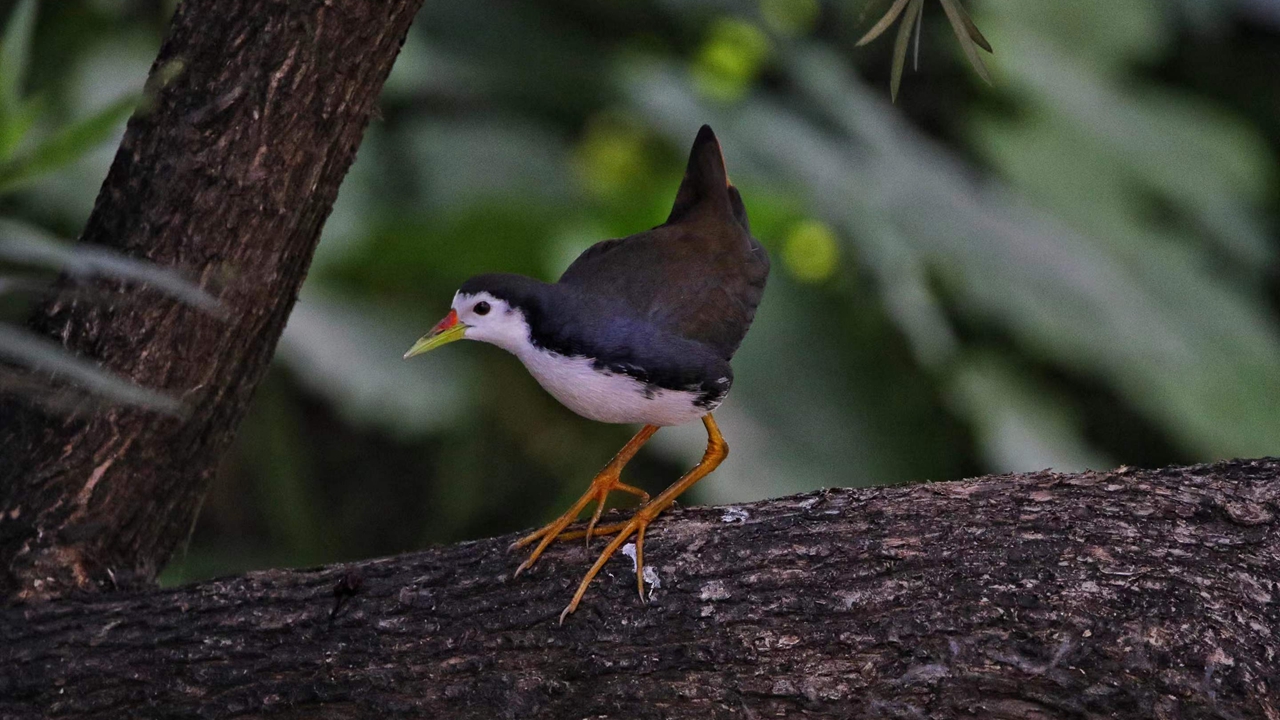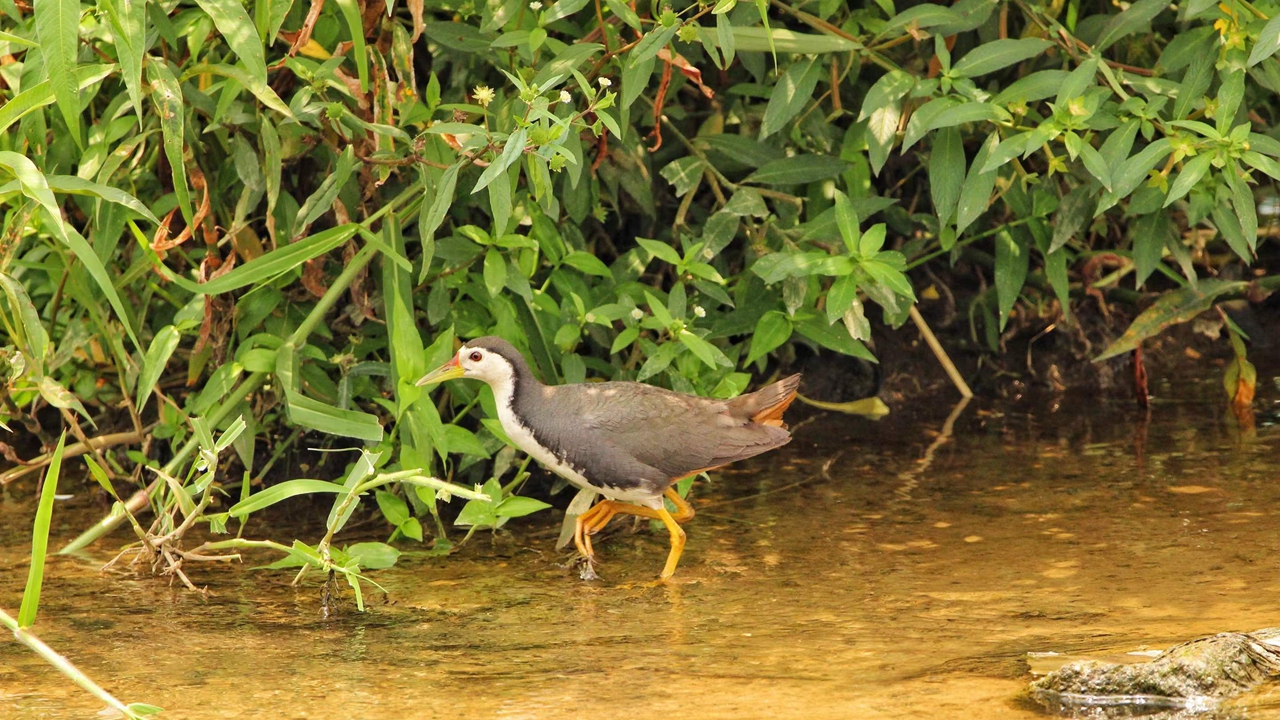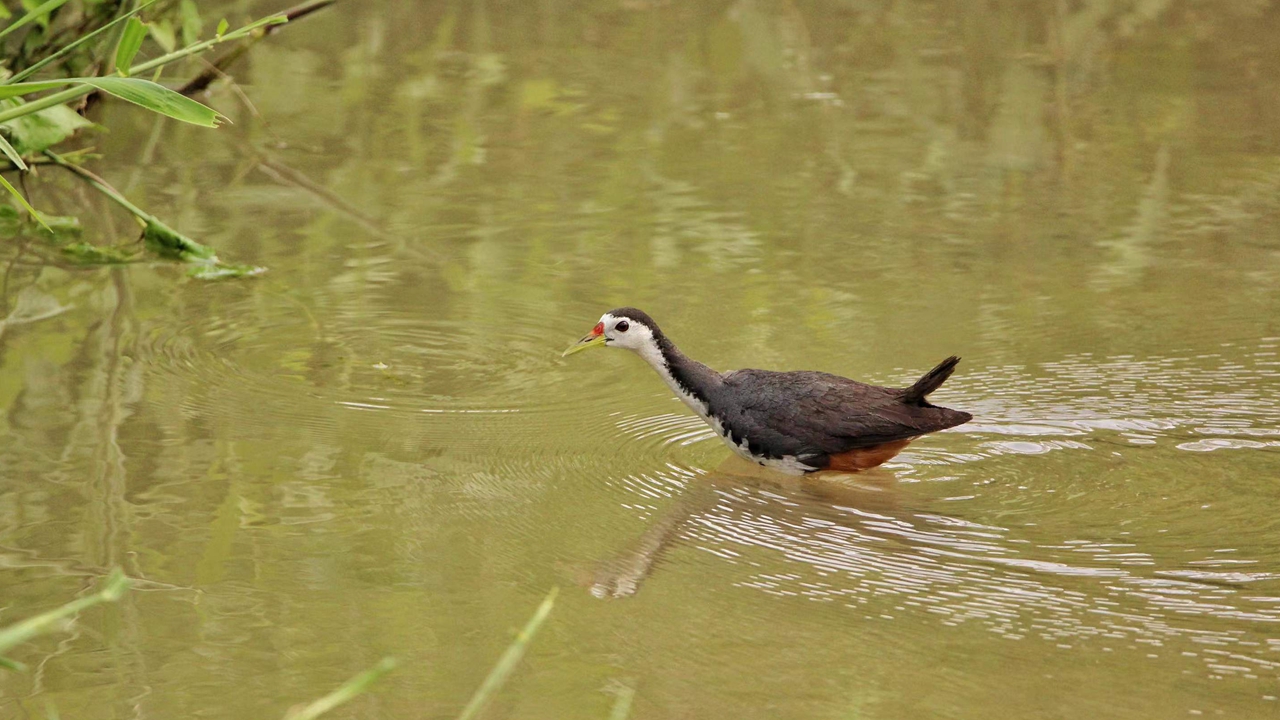The white-breasted waterhen
Writer: Issac Cohen | Editor: Zhang Chanwen | From: Original

A white-breasted waterhen is seen perched on a tree branch on the bank of Dasha River in Nanshan District. Photos by Issac Cohen
The white-breasted waterhen
The white-breasted waterhen (Amaurornis phoenicurus) is a medium-sized bird. Its plump body is covered in dark feathers, with a white breast and long, sturdy legs. The bird’s head is adorned with a red beak and a prominent red eye patch, making it easily recognizable. Its long tail feathers trail behind it as it moves gracefully through its habitat.
白胸苦恶鸟是一种体型中等的秧鸡科鸟类,躯干圆胖,覆深石板灰色羽毛,胸白色,腿长而粗壮,喙基部沾红色,容易辨认。行动时轻快敏捷,常上下摆动尾部。
This bird is commonly found in wetland habitats, including marshes, ponds, lakes and open fields. In Shenzhen, these birds can be seen near water bodies, foraging among the vegetation and exploring the muddy margins. They prefer dense foliage, which provides cover and protection as they search for food.
白胸苦恶鸟栖息于沼泽、池塘、湖泊等湿地生境及空旷的田野。在深圳,则常见于水体附近,喜在植被茂密、位置隐蔽的泥泞地带觅食、活动。

A white-breasted waterhen is seen perched on a tree branch on the bank of Dasha River in Nanshan District.
Being omnivorous, they feed on a diverse diet, including insects, small fish, amphibians, crustaceans, seeds, and other plant parts. White-breasted waterhens use their beaks to probe the mud and shallow water, searching for prey. Their adaptable feeding habits allow them to thrive in different habitats and contribute to the balance of local ecosystems.
白胸苦恶鸟属杂食性鸟类,以昆虫、小鱼、两栖动物、甲壳类动物、植物种子及其他部位为食,常用喙在淤泥和浅水中搜寻猎物。由于食谱广泛,白胸苦恶鸟能够适应多种栖息环境,为维持当地的生态平衡做出贡献。
Breeding typically occurs during the rainy season. The birds construct nests of plant materials, often hidden among the dense vegetation near the water’s edge. The female lays a clutch of up to six eggs, and both parents take turns incubating them. After an incubation period of approximately three weeks, the eggs hatch. The parents diligently care for the chicks until they fledge and become independent.
白胸苦恶鸟一般在雨季繁殖,使用植物材料于水边植被茂密处中筑巢,巢甚隐蔽。雌鸟每窝产卵多达 6 枚,由父母双方轮流孵化约三周后,雏鸟破壳,再由亲鸟共同喂养至羽翼丰满,方离巢独自生活。

A white-breasted waterhen is seen perched on a tree branch on the bank of Dasha River in Nanshan District.
The white-breasted waterhen helps to control insect populations and maintain the balance of local ecosystems.
白胸苦恶鸟有助于控制昆虫种群数量,维持当地生态系统的平衡。
Additionally, the bird’s foraging activities stir up the soil and vegetation, facilitating nutrient cycling and promoting the growth of wetland plants that provide habitats for species including fish, amphibians and invertebrates.
此外,白胸苦恶鸟在觅食中用喙翻动土壤和植被,促进了养分的循环及湿地植物的生长。这些植物日后则会为成为鱼类、两栖动物和无脊椎动物等的栖身之所。